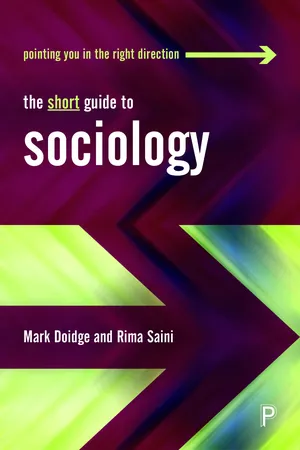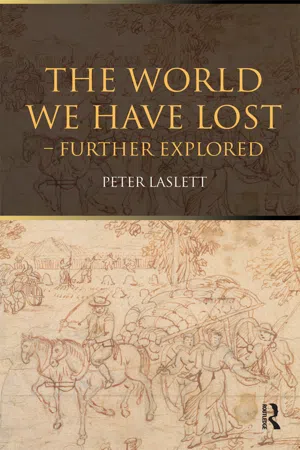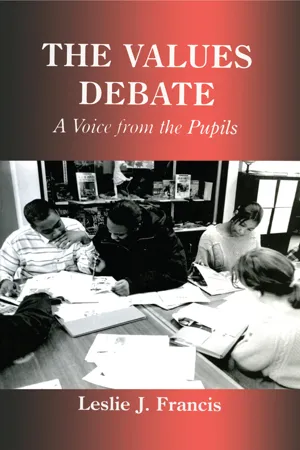History
Social Class in the United Kingdom
Social class in the United Kingdom has historically been stratified into distinct categories, including the upper class, middle class, and working class. These divisions have been influenced by factors such as wealth, occupation, education, and social connections. The concept of social class has played a significant role in shaping the country's history, politics, and societal structure.
Written by Perlego with AI-assistance
Related key terms
4 Key excerpts on "Social Class in the United Kingdom"
- eBook - ePub
- Doidge, Mark, Saini, Rima(Authors)
- 2020(Publication Date)
- Policy Press(Publisher)
Rather than the popular notion of three classes, the government has used the Registrar-General’s Social Classes (subsequently renamed Social Class based on Occupation, or SC) for the census and other analyses since 1913. These divide the population into six groups: professional; managerial and technical; skilled non-manual; skilled manual; partly skilled; and unskilled. Early sociological analyses drew on this schema, and that of British sociologist John Goldthorpe and colleagues, which introduced a sevenfold classification that introduced new managerial, technical and service sector jobs around the 1970s. As before, this focused on economic position and didn’t explicitly take into account the subtleties of gender or race that might affect one’s social standing, let alone social contacts or educational opportunities. Class is arguably best studied in relation to other identities. A working-class black mother has an entirely different experience of and take on class compared to a working-class white man. Chapter 5 discusses intersectionality – the study of multiple axes of identity – to understand how identities and oppressions are co-constituted. In 2011, the BBC launched the Great British Class Survey. 4 This also suggested that there are seven classes. This was based on the work of French sociologist Pierre Bourdieu and included concepts such as economic, social and cultural ‘capital’. It sought to account for the varying ways that class has changed through changing education levels and work opportunities. But more importantly, it doesn’t just focus on the economic. Class is not just about having money, but having a range of resources that enables an individual to access particular jobs, social spaces and groups. These social and cultural resources are combined with economic capital to determine one’s social status - eBook - ePub
The World We Have Lost
Further Explored
- Peter Laslett(Author)
- 2015(Publication Date)
- Routledge(Publisher)
A one-class society Chapter 2 Social divisions and power relations amongst nobility, gentry, townsmen and peasantsA one-class society may appear at first sight to mean one where there is no inequality, because everyone belonged to the same class. But it has already been laid down that this cannot have been so in the pre-industrial world, at least in Europe. The ancien régime, as the historians call it, was marked by a very sharply delineated system of status, which drew firm distinctions between persons and made some superior, most inferior. There were various gradations, all authoritatively established and generally recognized. If class were simply a matter of social status, of the various degrees of respect in which men are held by their fellows, then it could not be said that the world we have lost was a one-class society. On the contrary, it would have to be described as a society with a considerable number of classes, as many as there were distinct steps in the graduated system of status.But when the word 'class' is used, in conversation and by historians, it does not merely refer to status or to respect. The distribution of wealth and power is also at issue. This is obvious when the phrase 'class-conflict' appears. For it nearly always seems to imply the clash of groups of persons defending and enhancing not simply a common status but also interest and power. The emphasis is on the solidarity of classes as groups of persons which act in championship of their conflicting aims. Such classes have a further characteristic in ordinary usage: they are nation-wide.It is in this sense that we shall claim that there was, in England at least, only one class in pre-industrial society. A distinction will be drawn between a status group, which is the number of people enjoying or enduring the same social status, and a class, which is a number of people banded together in the exercise of collective power, political and economic. The argument will be that there was a large number of status groups but only one body of persons capable of concerted action over the whole area of society, only one class in fact. - eBook - ePub
The Values Debate
A Voice from the Pupils
- Leslie J. Francis(Author)
- 2014(Publication Date)
- Routledge(Publisher)
5Social ClassSetting the Scene
Recent reviews of the empirical evidence and speculative theories regarding social class in Britain make it clear that, in spite of the many problems of conceptualisation and operationalising, social class remains a key predictor of individual differences across a very wide range of issues (Argyle, 1994; Reid, 1998).In order to chart a path through current research concerned with the potential impact of social class on young people’s attitudes and values, this chapter distinguishes between two main groups of studies: those which have specifically explored social-class differences among adults from data provided by the British Social Attitudes Survey, and more wide-ranging studies conducted specifically among children and adolescents.British Social Attitudes Survey
The British Social Attitudes Survey has provided an annual report since 1984 covering a wide range of issues (see Jowell and Airey, 1984). The survey underpinning these reports includes information on social class. The original classification was based on the Office of Population Censuses and Surveys (1980) classification of occupations. In the 1992 report onwards the revised schema produced by the Office of Population Censuses and Surveys (1991) was used. Additionally the schema produced by Goldthorpe and Heath (1992) has been incorporated to provide an alternative conceptualisation of social class. In particular the earlier volumes in the British Social Attitudes series made good use of cross-tabulations by social class. Detailed inspection of these reports provides insight into a wide range of social-class differences in British society toward the end of the twentieth century.In the 1984 report Young (1984) traced a clear relationship between social class and identification with the major political parties. Conservative identifiers accounted for 54 per cent of classes one and two, 43 per cent of class three non-manual, 34 per cent of class three manual, and 24 per cent of classes four and five. Labour identifiers accounted for 17 per cent of classes one and two, 26 per cent of class three non-manual, 38 per cent of class three manual and 50 per cent of classes four and five. This analysis also pointed to a relationship between social class and political tolerance. The view that revolutionaries should be allowed to hold public meetings to express their views was endorsed by 66 per cent of those in classes one or two, compared with 48 per cent of those in classes four or five. The view that racists should be allowed to hold public meetings to express their views was endorsed by 69 per cent of those in classes one or two, compared with 52 per cent of those in classes four or five. - eBook - ePub
- Allin Cottrell(Author)
- 2019(Publication Date)
- Routledge(Publisher)
First, the ‘working class’ in Britain may be seen as a subset of the economically defined working class (i.e. wage and salary earning employees separated from the means of production), although it probably also includes sections of the petty bourgeoisie (in the strict sense of small-scale producers and traders employing their own means of production and labour power) who regard themselves as ‘working for a living’. The ‘working class’ collectivity is, in a sense, centred on manual industrial labour, at least for the adult male members of working class families, although (a) by no means all people who consider themselves working class are employed in that sphere and (b) a not insignificant minority of people employed in that sphere do not consider themselves working class. The British middle class, on the other hand, includes large sections of the economically denned work ing class (especially salaried employees) as well as sections of the petty bourgeoisie proper and sections of the ‘individual bourgeoisie’ (i.e. personal owners of means of production and employers of the labour power of others). 8 These are the two basic ‘classes’; in addition there is the ‘upper class’, which designation is generally restricted to the hereditary aristocracy and rich rentiers. To look at the matter differently, one could say that the members of the economically defined working class in Britain are divided between the ‘working class’ and ‘middle class’ collectivities, with this division depending on a range of factors including place within the division of labour by strata, parentage, education, home-ownership, and income. In a sense, the paradigm (male) member of the ‘working class’ will be a manual industrial worker, born of a father who was also a manual industrial worker, with minimal education, living in rented accommodation
Learn about this page
Index pages curate the most relevant extracts from our library of academic textbooks. They’ve been created using an in-house natural language model (NLM), each adding context and meaning to key research topics.



